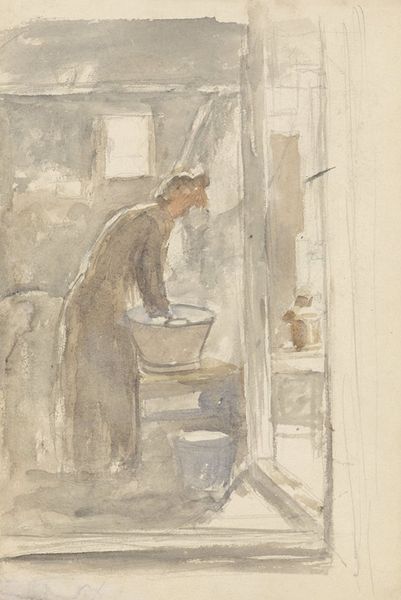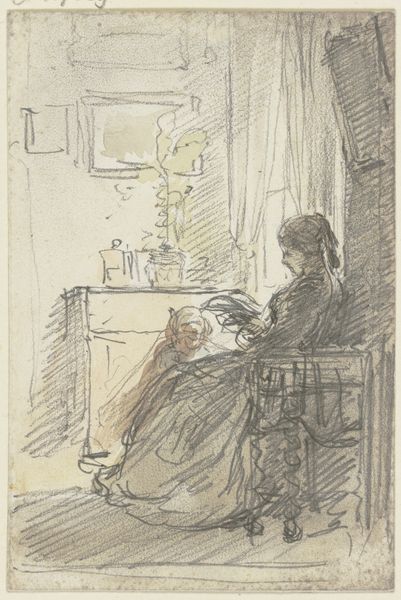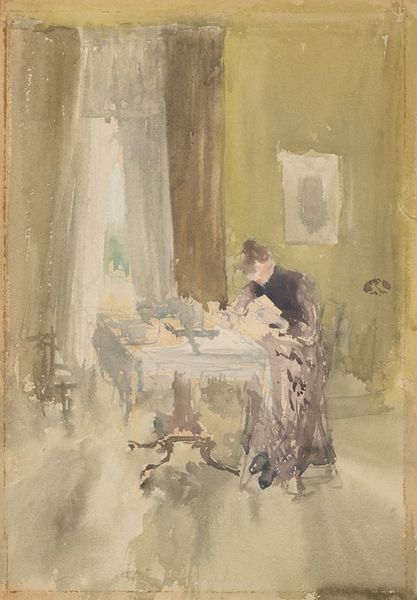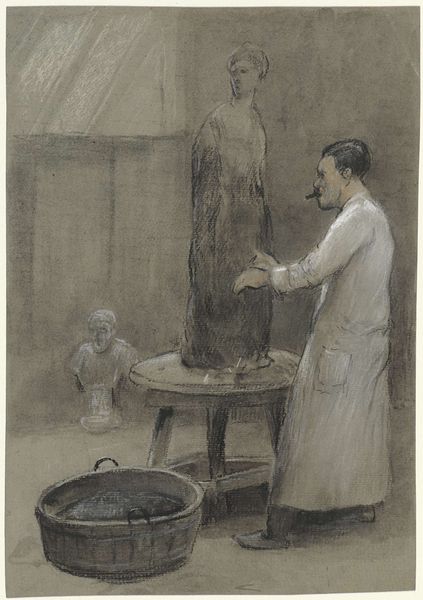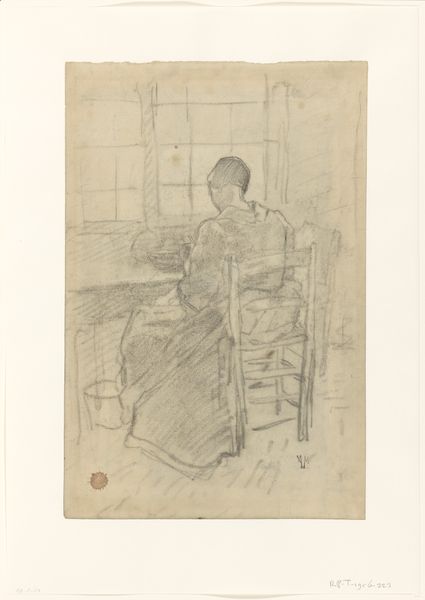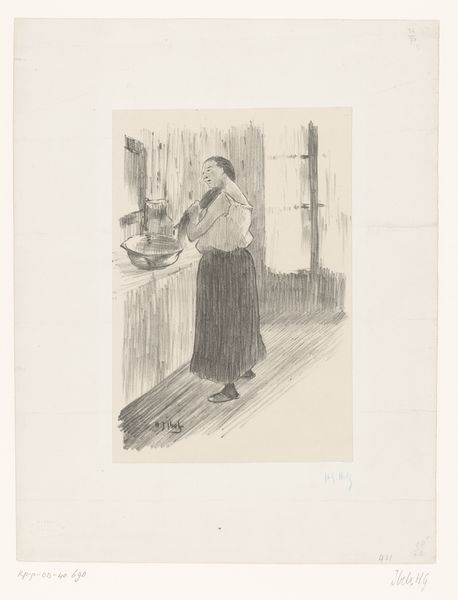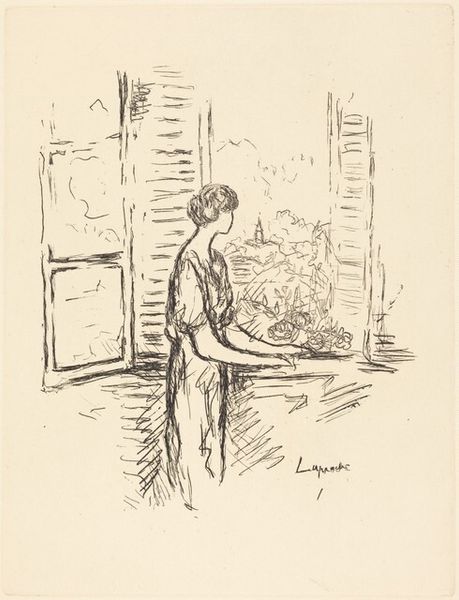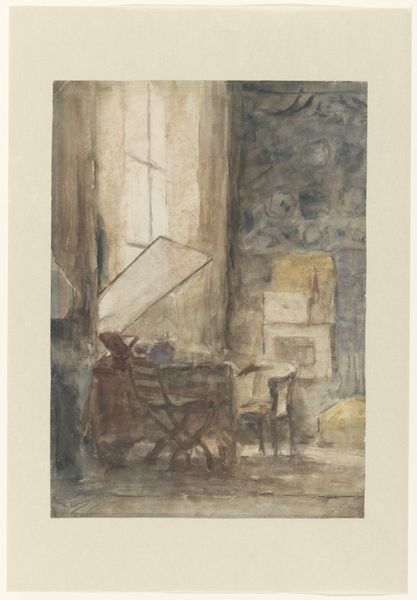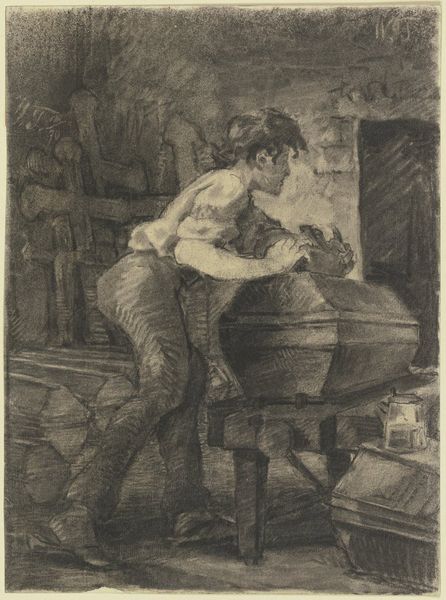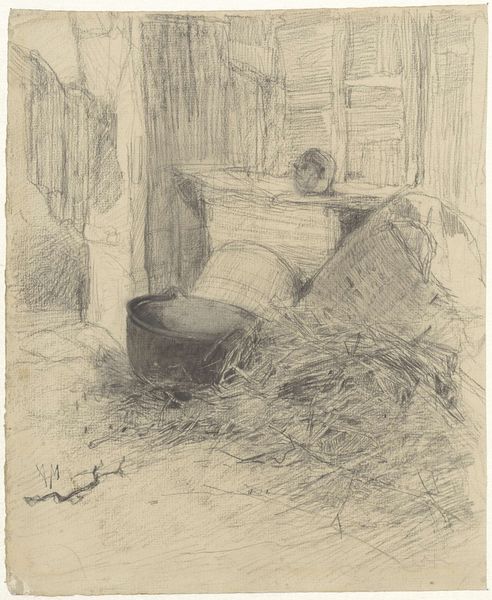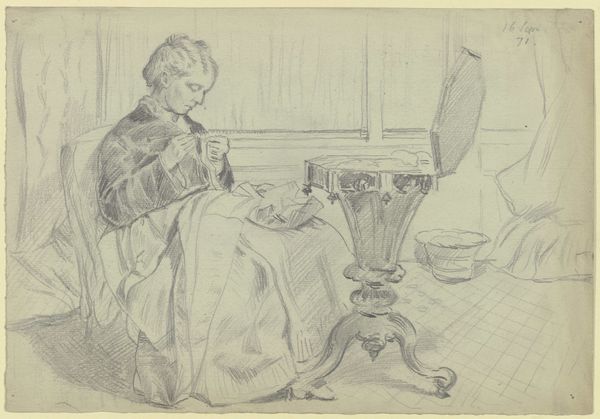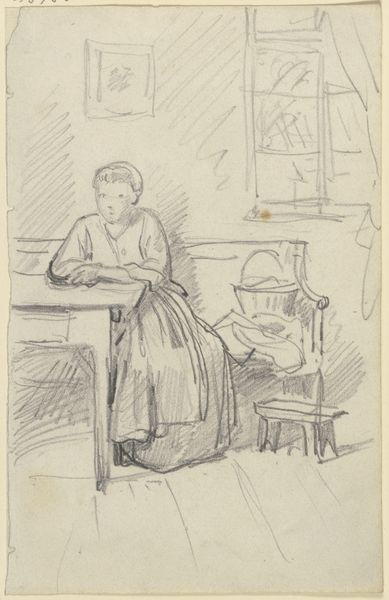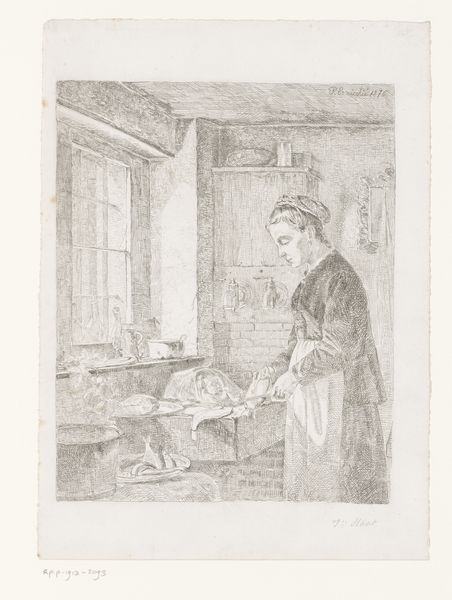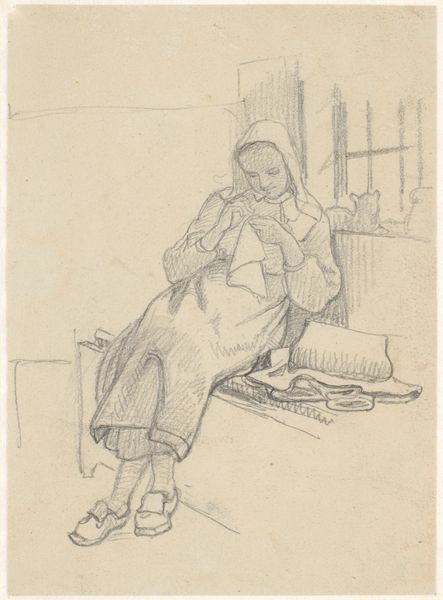
drawing, pencil
#
drawing
#
figuration
#
pencil
#
genre-painting
#
realism
Dimensions: overall: 44.2 x 33 cm (17 3/8 x 13 in.)
Copyright: National Gallery of Art: CC0 1.0
Editor: So, here we have Robert Austin's pencil drawing, "Before Mass," created around 1926. I find it quietly intimate – a glimpse into a woman's pre-ceremony ritual. It feels very personal and everyday. What catches your eye? Curator: I'm immediately drawn to the title itself, "Before Mass." It subtly shifts the work beyond a simple domestic scene. It compels us to consider the social and cultural importance of religious practice during this period and in Robert Austin's environment. Consider the 1920s and the aftermath of World War I, a time when faith and community were particularly important to those dealing with change and grief. This piece feels as though it's examining and even perhaps re-evaluating these elements of faith and society in post-war Europe. Does it change how you perceive it? Editor: That's interesting. I hadn’t considered the social weight of religion at the time. I was more focused on the quiet nature of the drawing, which seems to isolate this individual in an introspective state. Curator: And that sense of isolation can certainly coexist with the significance of religious ritual. I think Austin is setting up an interesting tension between individual devotion and public expression. Notice how the composition deliberately places other elements like the hanging towels and bottle alongside typical religious implements: are they intended as contrast, or unification? How might the context of exhibition at the time affect its reading? Editor: It does seem more complex now, the still life on the bureau feels both secular and sacred. Something as simple as "Before Mass" actually tells a multilayered story about personal ritual versus institutional influence. Curator: Exactly. It's through that tension that we begin to understand how Austin engages with his contemporary world and its societal expectations. This isn’t simply a genre painting; it's an active questioning of society and the individual’s place within it. Editor: I'm going to carry those points with me; it's like the artwork itself challenges assumptions about what religion represents in everyday life.
Comments
No comments
Be the first to comment and join the conversation on the ultimate creative platform.
